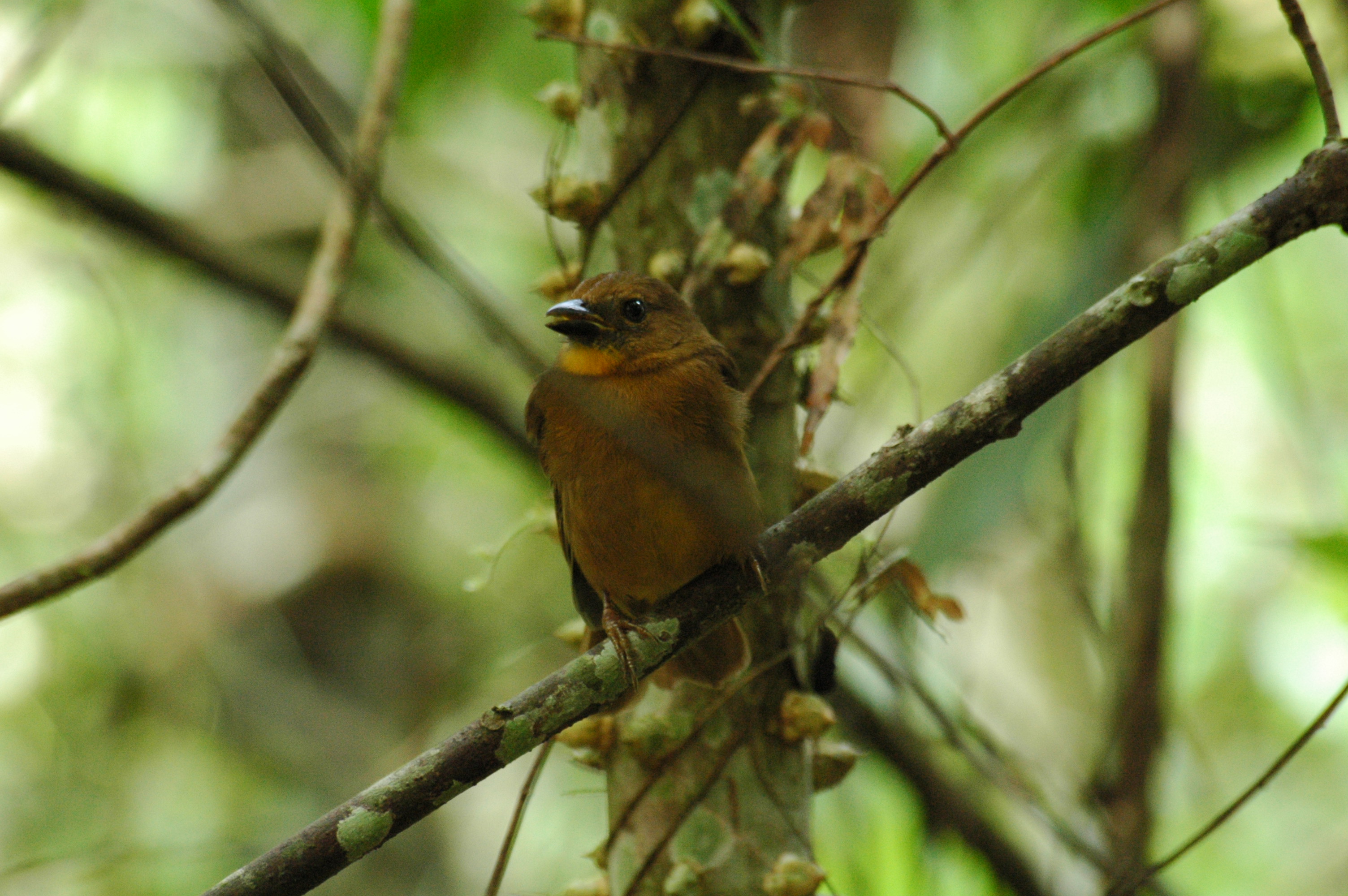- Red-throated Ant-tanager
Taxobox
name = Red-throated Habia

status = LC
status_system = iucn3.1
regnum =Animal ia
phylum =Chordata
classis =Aves
ordo =Passeriformes
familia =Cardinalidae (see text)
genus = "Habia"
species = "H. fuscicauda"
binomial = "Habia fuscicauda"
binomial_authority = (Cabanis,1861 )The Red-throated Habia or Red-throated Ant-tanager, "Habia fuscicauda", is a medium-sized
passerine bird . Thisspecies is a resident breeder on theCaribbean slopes from southeasternMexico to easternPanama . It was usually considered an aberrant kind oftanager and placed in the Thraupidae, but is more likely a relative of the cardinals (Cardinalidae ).Red-throated Habias are 19 cm long and weigh 40 g. Adult males are dull dusky red, somewhat paler below, and with a bright red throat and central crown. The female is brownish olive, paler and greyer below, and with a yellow throat and small dull yellow crown stripe. Young birds are brown and lack the throat and crown patches.
Both sexes of this species are duller and darker than the related
Red-crowned Ant-Tanager which occurs on thePacific slope in itsCentral America n range.It occurs in thick undergrowth at the edge of forest, second growth or abandoned plantations at altitudes from sea level to 600 m. The large but untidy cup nest is usually built 1-3 m high in the fork of a shrub or tree, and is often decorated with living
fern s. The normal clutch is two or three white eggs laid from April to June.These birds are found in pairs or small groups. They eat
insect s,arthropod s and fruit like those of "Cymbopetalum mayanum " (Annonaceae ), and less often "Trophis racemosa " (Moraceae ) [Foster (2007)] , and will followarmy ant columns especially in lowlands whereantbird s are uncommon. The flock will give a defensive spread-wing-and-tail display to deter potential predators.Footnotes
References
*|year=2004|id=53803|title=Habia fuscicauda|downloaded=12 May 2006 Database entry includes justification for why this species is of least concern
* (2007): The potential of fruiting trees to enhance converted habitats for migrating birds in southern Mexico. "Bird Conservation International" 17(1): 45-61. doi|10.1017/S0959270906000554 [http://journals.cambridge.org/production/action/cjoGetFulltext?fulltextid=936412 PDF fulltext]
Wikimedia Foundation. 2010.
